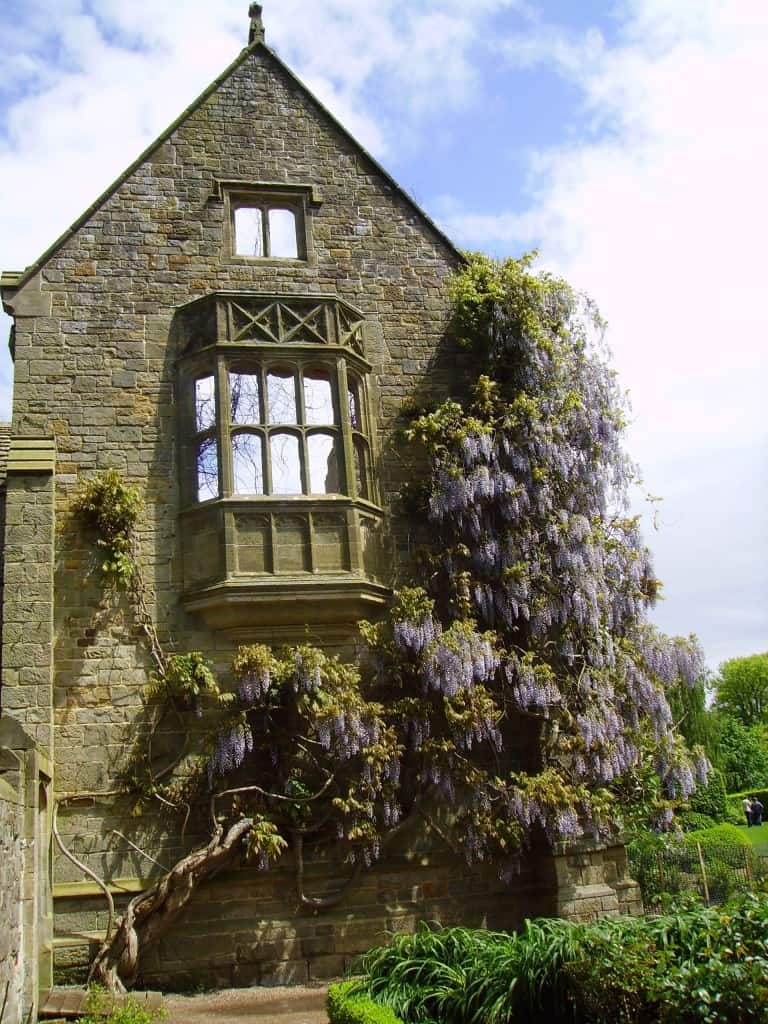Last updated on January 24th, 2022
Our site is reader supported, this means we may earn a small commission from Amazon and other affiliates when you buy through links on our site.
Why is my Wisteria not flowering?
Wisteria is a climbing plant that produces masses of long petulant, sweetly scented flowers that are usually lilac-blue, blue or white in colour. They lend themselves to many a situation and look fantastic when grown in a prominent position in pots or in the ground.
Wisteria can be affected by a few problems including sudden dieback and root rot. The most common and frustrating problem is that they can be known for not flowering as much as they are known for their spectacular scented flowers.
Choose an ideal plant to reduce the risk poor flowering

The first thing to consider if you do not already have a Wisteria or plan to replace one is that Wisteria usually takes around 5 years to flower and a Wisteria that is grown from seed can take up to 20 years to flower. As such, you should choose a Wisteria that has either been grown from a cutting or is a grafted plant. Most garden centres and nurseries sell grafted plants that are perfect and most are also a specific cultivar. Grafted plants are easy to spot because they have a large bulge where the plant has been grafted onto a rootstock at the bottom of the main stem.
Reasons why Wisterias don’t flower
There are a few reasons why Wisteria doesn’t flower once planted so let’s look into them. Firstly, if you have just planted your Wisteria and it has been planted for less than two years then give it time. Wisterias can take up to 5 years to flower as previously mentioned.
A Wisteria needs to be planted in full sun and if it has been planted in shade it will cause poor flowering, or even worse, no flowers at all. Choose a location where they get at least 5 to 6 hours of sun.
Wisterias can usually flower poorly if the soil is not suitable for them. Incorrect levels of potassium in the soil is common and can be corrected by applying sulphate of potash in spring at the level recommended on the box. High levels of nitrogen can also cause a Wisteria not to flower, the reason for this is nitrogen promotes foliage growth in plants. This can prevent the plant from producing flowers because they are putting all of their energy into promoting new leaves. One of the ways to combat this is to feed them with a phosphate fertiliser, which is used to promote flowers and not foliage growth.
The buds on Wisteria form in the Summer on the previous year’s growth and as such, they can be affected by dry conditions that cause the buds to distort or fail. Keep an eye on the ground conditions during July to September whilst the buds are forming by watering the plant sparingly during any dry spells through these important months.
Pruning a Wisteria incorrectly can cause them not to flower
A Wisteria that has been pruned incorrectly can cause them not to flower, and it is important to know when to prune. Wisteria grows well if they aren’t pruned yearly, however, if pruned every year, twice a year, it will encourage more flowers and better plants.
Prune twice a year, once a couple of months after flowering has finished when new growth is shortened to about 5-6 leaves. This helps control the growth and help promote more flower buds rather than new growth. Prune again for a second time in mid-winter around January – February to shorten the same growth again. Prune back to 3 buds, this is done as the flowers are produced on new growth so if you cut in spring you will be cutting the flower buds off and therefore reducing the number of flowers produced.
Quick overview of the reasons your Wisteria may not be flowering
- Dry conditions during July-September when the buds are forming. Water regularly to keep the soil moist.
- Wisterias need full sun. Plant them in a sunny location where the plant can get 5-6 hours of sun (if possible).
- Feed in the Autumn with a sulphate of potash to combat high levels of potassium.
- Prune twice a year (correctly) to promote more flowers. Do not prune them in spring.


